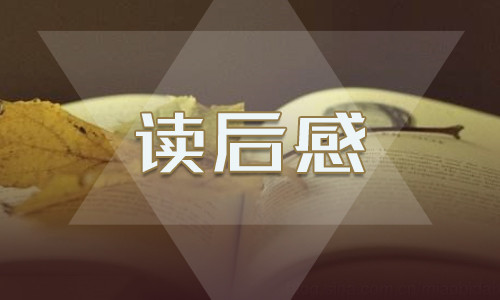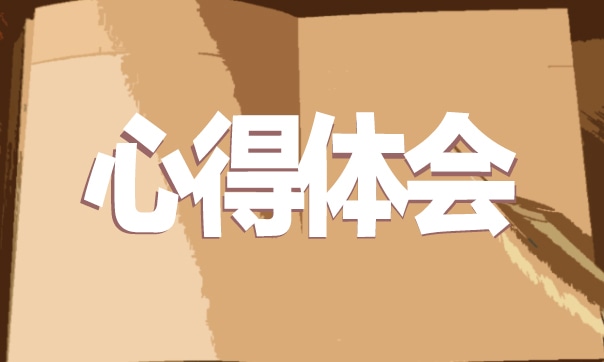资料收集于网络,如有侵权请联系网站删除
The First Period(Warming up, one class)
Teaching Aims:
1. To learn the knowledge of the cultural relics. 2. Discuss how to protect our cultural relics. 3. To learn the following words or phrases:
cultural relics, rare, valuable, survive, vase, rare, Dynasty
Teaching Design
Step One: Presentation
(By showing them some photos of some famous cultural relics.)
Hello, everybody, let’s look at the screen. Here are some pictures. They are all very famous places in China or in the world. Please think these over: A. Can you name them out?
B. Who have the right to own and confirm them?
(The shown pictures: ①The Great Wall, ②The Imperial Palace of the Ming and Qing Dynasties in Beijing and Shenyang; ③The Mausoleum of the First Qin Emperor and the Terracotta Warriors)
Let the students name out the famous places in the pictures, and tell them they are cultural relics. And explain what cultural relics are.
A. a cultural relic is sth. that survived for a long time
B. a cultural relic may be a part of old thing has remained when the rest of it had been
destroyed
C. or a cultural relic is something rather rare
(while showing these photos, teach the new words in red: cultural relics, survive, remain, rare) 1. Get the students understand the identity of the cultural relics.
2. Let the students try to know that they are at least two sites of cultural relics, the natural site; and the cultural site.
( By showing the pictures of some natural sites relics. Eg: Mount Huashan, The JiuZhaiGou Valley, River Li )
Step Two: Drills
Let the students make some more examples of cultural relics, including the ones inside our country or in other countries, especially the ones in our location. Here are some possible answers from the students:
(The Neiguan Cave(内莞岩); The Xinfengjiang River(新丰江); Heyuan Dinosaur Park(河源恐龙公园); Yuanmingyuan(圆明园), etc.)
(The Sydney Opera; The White House; The Big Ben; The Amber Room, etc.)
Step Three: Discussing 1 word可编辑
资料收集于网络,如有侵权请联系网站删除
As we all know that cultural relics are rather valuable, rare, and sometimes, it is in very high price. 1. Then can you tell the value of the cultural relic? (Have the students discussed for some time in teams, then get their answers by expressing in class.)
(There will be a lot of possible answers. Eg: From the cultural relics we can know what people did in the past, and we can know the cultures at that time, and maybe we can know the technology of making them…)
2. How to protect the cultural relics? (The same as Question 1)
(There will be a lot of possible answers. Eg: Having the idea of protecting our cultural relics; don’t damage them; use them in a right way…..)
Step Four: Discussing 2
1. If you find a cultural relic, what will you do with it? 2. Do you think to whom the cultural relics belong?
(All cultural relics belong to all people and whole society.)
Have the students to discuss the first question for about two or three minutes, then show the answer for their team. Then the same way for Question 2. (While discussing, teach the new phrase in red) The Second Period (Reading part, 2-3 classes)
Teaching Aims:
1. Reading and understanding, catching the history and information of the Amber Room. 2. Functional item, how to tell the story about the Amber Room 3. Grammar point: The Attributive Clause
4. Learning the following useful words and phrases: in search of, fancy, style, jewel, in return, reception, light, mirror, wonder, at war, remove, furniture, secretly, wooden, doubt, remain, mystery, apart, take apart
Teaching Design
Step One: Presentation
Last period, we talk about the cultural relics at home and abroad, such as The Great Wall, The Imperial Palace of the Ming and Qing Dynasties in Beijing and Shenyang; The Mausoleum of the First Qin Emperor and the Terracotta Warriors The Sydney Opera; The White House; The Big Ben; The Amber Room (which we have learnt last period)
Then, we will go the Amber Room, showing them the pictures of it.
Do you know the history of the Amber Room, and do you know where the Amber Room is now? (The Amber Room is a room built by lots of ambers. It was a gift given to Peter the Great, the King of Russia, by the King of Prussia, Frederick William I. It was given the name because almost seven thousand tons of natural ambers were used to make it. But during World WarⅡ in 1941, the Nazi German army secretly stole the Amber Room and sent boxes of the Amber Room on a train to a German City. After that, what really happened to the Amber Room remains a mystery.) Step Two: Reading 1 (Listening, reading and understanding) word可编辑
资料收集于网络,如有侵权请联系网站删除
1. Now please listen to the tape of the text IN SEARCH OF THE AMBER ROOM. And then read aloud. Pay attention to the pronunciation of each word and the pauses within each sentence. 2. After reading the text, please complete the exercises of Comprehending. ①Keys to Ex1 CEBDAF ②The suggested answers to the Ex2
Para 1 How was the Amber Room made? Para 2 Why did the King of Prussia give the Amber Room to the Czar of Russia as a gift? Para 3 How did the Amber Room become one of the wonders of the world? Para 4 How did the Amber Room get lost? Para 5 How was a new Amber Room built? 3. Detailed Reading
Read the text again and answer the following questions:
①. What was given to the Russian people as a great gift by Frederick WilliamⅠ,the King
of Prussia?
(The Amber Room was given to the Russian people as a great gift by Frederick WilliamⅠ,the King of Prussia )
②. Why it is called the Amber Room and how many tons of amber were used to make the
Amber Room?
(Because it was made of seven thousand tons of amber, which has a beautiful yellow brown color) ③. What did CatherineⅡ do with the Amber Room?
(She had the Amber Room moved to the palace outside St Petersburg and transformed it.) ④. What happen to the Amber Room during World WarⅡ?
(It was stolen by the Nazi and it was taken apart and missing in World WarⅡ)
Step Three: Intensive Reading
Skimming and identifying the general idea of each paragraph
Now please read the text again and try to catch the main idea of each paragraph. After about five minutes reading, have some students speak for their teams. 1st paragraph: the introduction of the Amber Room
(The Amber Room had a strange history and something about its design, color, shape and material.)
2nd paragraph: the gift to the Czar
(the history of the Amber Room and its use in Russia—the Czar’s winter palace and a small reception hall for important visitors.)
3rd paragraph: the relocation of the Amber Room in CatherineⅡ time
(CatherineⅡ had the Amber Room moved to the palace outside St Petersburg told the artists to add more details to it.)
4th paragraph: the missing of the Amber Room
(the German Nazi stole the Amber Room secretly during the World WarⅡ,and what really happen to the Amber Room remain a mystery)
5th paragraph: the rebuilding of the Amber Room
(Russia and Germany have built a new Amber Room for the 300th birthday f St Petersburg.)
Step Four: Discussing word可编辑
资料收集于网络,如有侵权请联系网站删除
Closing down by having a discussion
A. Can you imagine the fate of the Amber Room? What is it?
B. Do you think if it is worthwhile to reproduce the Amber Room? Why?
Have the students discussed one question by one question for some time, and then show their views for their teams. There may lots of possible answers. Keys for reference:
A: I have no idea about the fate of the Amber Room. Because anything can happen to it. Maybe it was destroyed at war in the fighting fire. You see, ambers can be melted easily. Maybe it was kept secretly by somebody who had died without telling about it to anyone else. So maybe it is lying somewhere quietly.
B: I think it is worthwhile to reproduce the Amber Room. Because it represents the culture and a period of history in St Petersburg. It is a trace and feature surviving from a past age and serving to remind people of a lost time.
Step Five: New words teaching
Read the reading part paragraph by paragraph again and pick up the key words and phrases by themselves, let the students try to explain the meaning and usage. amazing, select, honey, heat, design, fancy, style, decorate, jewel, artist, belong, in return, troop, light(lit), mirror, wonder, at war, remove, furniture, wooden(wood), doubt, former Especially pay attention to the words and phrases underlined.
Step Six: Grammar points in this text
Let the students try to find out the Attributive clause in warming up and the reading part. 1. A cultural relic is something that has survived for a long time.
2. It is your job to look into any reports of cultural relics that have been found in China. 3. You are sent to a small town where you find a relic that was stolen from a palace. 4. The man who has it insists that it belongs to his family.
5.This gift was the Amber Room, which was given this name because almost seven thousand tons of amber were used to make it.
6. Later, CatherineⅡhad the Amber Room moved to the palace outside St Petersburg where she spent her summers.
7. In 1770, the room was completed the way she wanted it. 8. This was a time when the two countries were at war.
Have the student’s judge whether they are the same as those we had learnt before. Especially the 5th one. This will be the homework after class.
The Third Period (Learning about Language, 1-2 classes)
Teaching Aims:
1. To learn some useful words and expressions 2. To learn some useful structures
3. To learn the Restrictive and Non—Restrictive Attributive Clause Teaching Important Point word可编辑
资料收集于网络,如有侵权请联系网站删除
Learn how to use the Attributive Clause with that/which/who/where/when Teaching Difficult Point: ⑴. How to tell the Attributive Clause with that/which/who/where/when from other clauses. ⑵. Learn the differences between the Restrictive and Non—Restrictive Attributive Clause
Teaching Design
Step One: Retelling (Can be chosen) Retell the story of the Amber Room in their own words.
Step Two: Exercising 1 (Exercise 1 &2 on Page 3)
(1) Complete Exercise One in Learning about Language on Page3. Asking and answering activity to check the students’ answers of the exercises; individual, pair of group work or finish each task. Here are the keys to Ex1: 1. select 7. in search of 2. rare 8. suivive 3. reception 9. remove 4. amaze 10. artist 5. less than 11. former 6. wooden 12. at war (2) Read the passage and complete it with the words giving. Keys to Ex2:
dynasties, style, amazing, jewels, designed, decorated, fancy, rare, doubt, worth
Step Three: Exercising 2 (Exercise 3 on Page 3) Look, think and compare
Read over the materials in Ex2 carefully and try to find out the different meanings and usages of the phrase belong to, and try to match the meaning with the given sentences. Keys: 1. to be the property of; The coat belongs to me. 2. to be a part of, be connected with; That top belongs to this desk. 3. to be a member of; He belongs to a large family.
Step Four: Grammar point (the Attributive clause) ⑴ . Discovering useful structures (on Page 4)
Let the students try to find out the Attributive clause in warming up and the reading part. 1. A cultural relic is something that has survived for a long time.
2. It is your job to look into any reports of cultural relics that have been found in China. 3. You are sent to a small town where you find a relic that was stolen from a palace. 4. The man who has it insists that it belongs to his family.
5.This gift was the Amber Room, which was given this name because almost seven thousand tons of amber were used to make it. 6. Later, CatherineⅡhad the Amber Room moved to the palace outside St Petersburg where she spent her summers.
7. In 1770, the room was completed the way she wanted it. word可编辑





